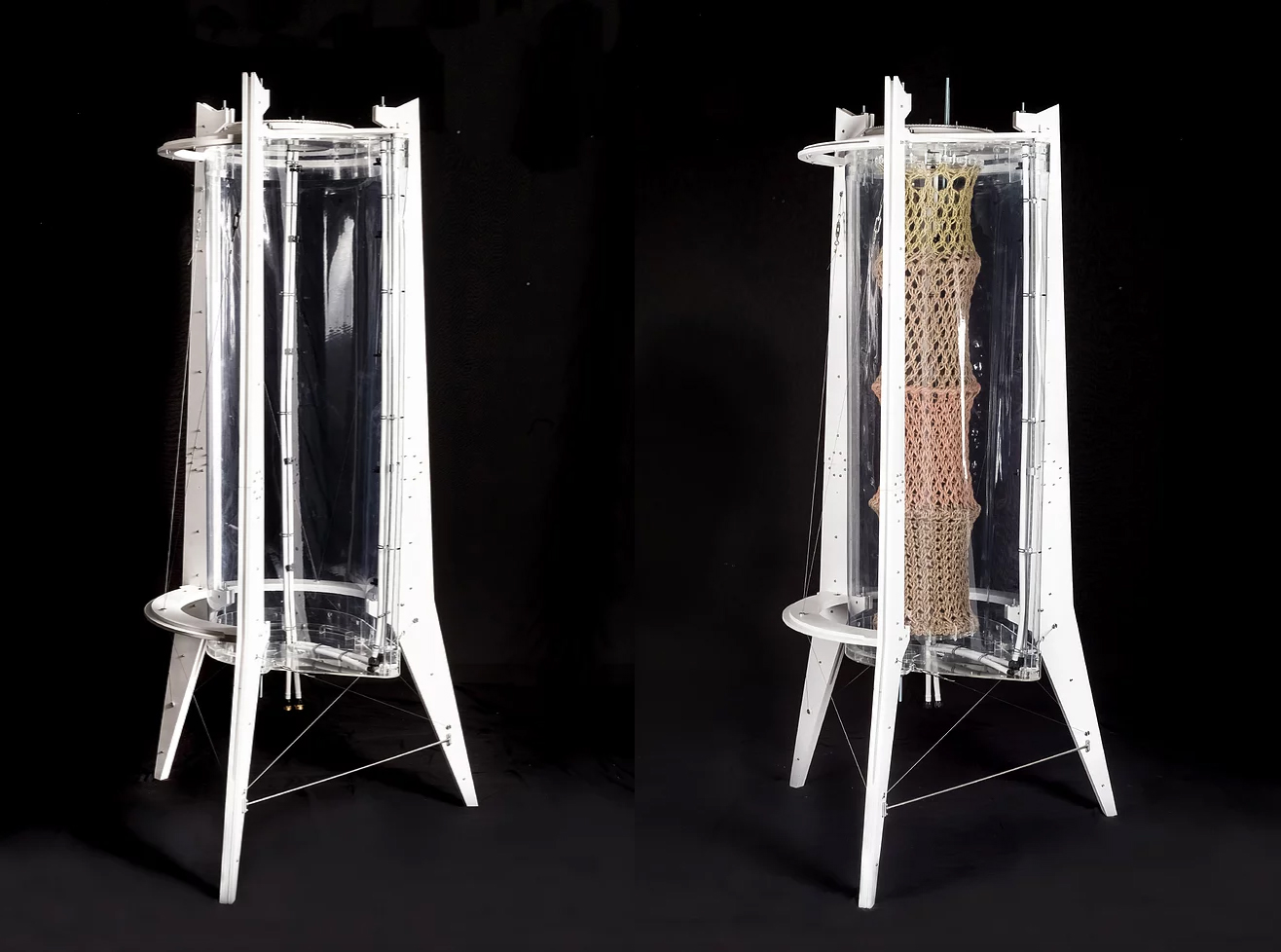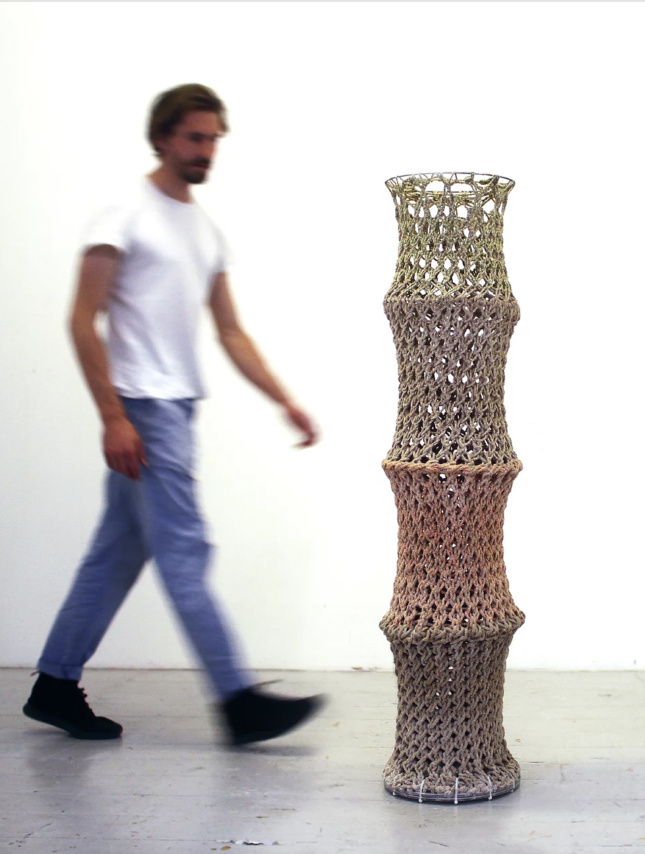Bacteria often evoke a destructive image, with connotations of decay and illness. But like all living communities, as much as they consume, they also create (or, perhaps more accurately, excrete). And it’s this creative power that London-based architectural researcher Bastian Beyer is harnessing in his “Column Project.” With designer Daniel Suarez, Beyer has created solid, structural forms from microbe-suffused textiles as a more sustainable, biodegradable alternative to carbon-intensive materials.
The project’s central innovation is a dual-use apparatus that combines a loom and a so-called bioreactor. Woven jute (tested in many patterns and weights) acts as a host for a whole environment of sprayed-on microorganisms—a microbiome—clinging to the textiles. The introduction of calcium chloride and urea spurs the sporosarcina pasteurii bacteria to action, catalyzing their production of a calcite structure that alters the underlying fibers and solidifies the knit matrix over about three days. “These microbiomes are in constant (biological) exchange with their environment which varies in their activity depending on external and internal conditions,” said Beyer, speaking of the ways the environment, bacteria, and material interact.
While the textile structure doesn’t have the strength of materials like carbon fiber or fiberglass, it still stands solid and can be used for “spatial dividers, shading features, reinforcement, and potentially even structural roof or wall systems,” according to Beyer. Given its unique biologically-focused design, there’s also the hope that it might be a self-repairing technology.
Somewhat cryptically, or poetically, depending on your disposition, Beyer said that “the project can be understood as an architectural mediator of a multi-actor fabrication process, allowing the interdependent inputs from the digital, the microbiological as well as the human body to merge into one co-creating entity.” It collapses distinctions of biology and technology, of craft and natural processes. The project, which won a 2018 Autodesk ACADIA Emerging Research Award, is part of the broader ArcInTex initiative, a European program that supports explorations across the intersections of “architecture, interaction design, and textiles.”

